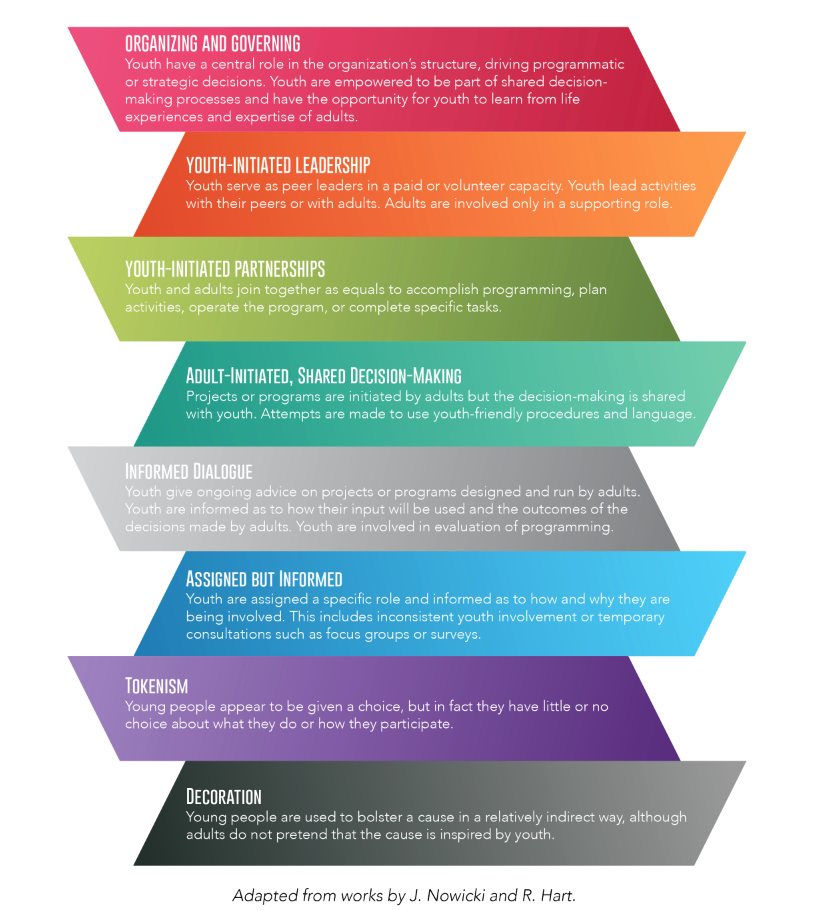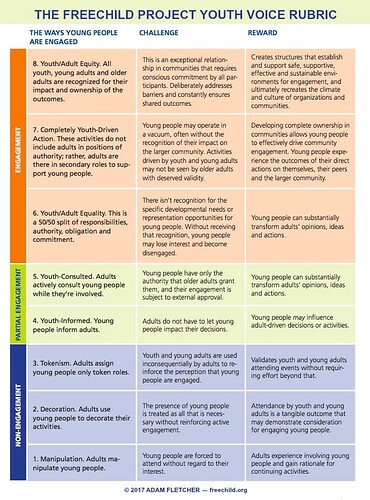Take a look at this framework for defining youth leadership from the Texas Network of Youth Services. Our collective goal is to be at the top level, organizing and governing, where youth have a central role in the organization’s structure, and not at a bottom level, like tokenism, where young people appear to be given a choice, but in fact they have little or no choice about what they do or how they participate.
 this topic if you’re a fan and want to highlight this resource for others in the community.
this topic if you’re a fan and want to highlight this resource for others in the community.

Image Transcribed
The levels on the youth engagement ladder are, from highest to lowest
- Organizing and Governing: Youth have a central role in the organization’s structure, driving programmatic or strategic decisions. Youth are empowered to be part of shared decision-making processes and have the opportunity for youth to learn from life experiences and expertise of adults.
- Youth-Initiated Leadership: Youth serve as peer leaders in a paid or volunteer capacity. Youth lead activities with their peers or with adults. Adults are involved only in a supporting role.
- Youth-Initiated Partnerships: Youth and adults join together as equals to accomplish programming, plan activities, operate the program, or complete specific tasks.
- Adult-Initiated, Shared Decision-Making: Projects or programs are initiated by adults but the decision-making is shared with youth. Attempts are made to use youth-friendly procedures and language.
- Informed Dialogue: Youth give ongoing advice on projects or programs designed and run by adults. Youth are informed as to how their input will be used and the outcomes of the decisions made by adults. Youth are involved in evaluation of programming.
- Assigned but Informed: Youth are assigned a specific role and informed as to how and why they are being involved. This includes inconsistent youth involvement or temporary consultations such as focus groups or surveys.
- Tokenism: Young people appear to be given a choice, but in fact they have little or no choice about what they do or how they participate.
- Decoration: Young people are used to bolster a cause in a relatively indirect way, although adults do not pretend that the cause is inspired by youth.
Many thanks to Sarah of IntegrateNYC for first introducing this framework to me!
Model is adopted from Children’s Participation: From Tokenism to Citizenship by Roger Hart.
